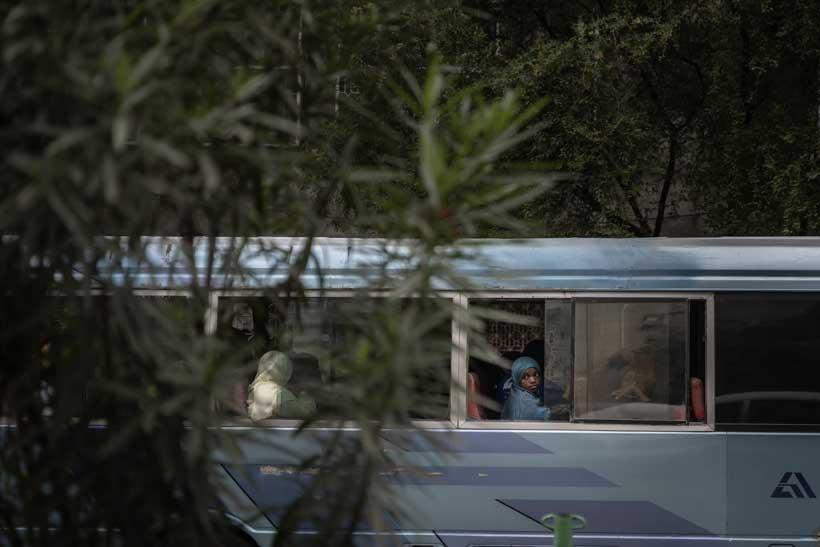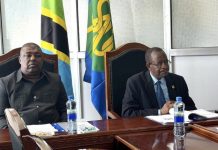By
Ezra Nnko
Africa-Press – Tanzania. “The Private Sector is the engine of the economy; therefore, we must work closely together to achieve our national development agenda”.- Tanzania’s President, Samia Suluhu Hassan, at the Public-Private Partnership Forum.
The public-private partnership concept was first introduced in Tanzania during the launch of Tanzania Development Vision 2025, a long-term national development framework launched in 1999 to guide the country’s social and economic transformation toward a middle-income economy by 2025. Through this vision, PPP aims to serve as a mechanism for mobilizing private capital, technology, and expertise to support the public sector.
During the early years of PPP implementation in Tanzania, the concept was introduced in several sectors, such as energy and transportation. The early years proved less efficient with a boom of corruption scandals. Among the notable examples of shortcomings in managing the PPP projects are theIndependent Power Producers (IPP) initiatives, such as SONGAS and Independent Power Tanzania Limited (IPTL). These projects had a predominantly negative impact on the Tanzania energy sector, primarily due to operational inefficiency and the corruption-related scandals.
A major factor contributing to the inefficiency was the weak contract negotiation capacity among the pro-government experts, who lacked adequate technical, legal, and financial expertise to negotiate complex Power Purchase Agreements (PPAs). As a result, the agreement favored the private entity and exposed Tanzania Electrical Company (TANESCO), and by extension, taxpayers, to significant financial risk. This stemmed from the obligation to cover operating costs by making payments to IPTL even when the power was not generated.
Another key lesson drawn from the IPTL agreement was the lack of rigorous due diligence and feasibility assessment, as the government did not thoroughly verify the project’s financial and technology parameters prior to the approval. Explicitly, the project plant was planned to use diesel, which was much more expensive and unsuitable for the energy consumption in Tanzania.
This was the result of the closed-door negotiation, where the parliament had less oversight on the agreement, together with a lack of a clear PPP legal and regulatory framework.
The Legal and Regulatory Framework
Following the politically driven IPTL disaster, the Tanzanian government enacted the Public Private Partnership Act in 2010. This legislation aimed to establish a clear, transparent, and coordinated framework for developing the PPP projects while creating robust institutional structures. In June 2018, the Tanzanian Parliament passed the Public-Private Partnership (Amendment) Act of 2018, which it intended to improve coordination, transparency, and private sector participation in PPP projects.
In 2023, the Tanzania Public Private Partnership Regulations were enacted, providing detailed procedural and operational guidelines for implementing PPP projects. Through the regulations, it also reinforced the role of an organization that would coordinate all public-private partnership projects in Tanzania. Another key objective was to ensure the selected PPP projects were strategically aligned with the national development goals, specifically on public interest and fiscal sustainability.
Public-Private Partnership Achievement in Tanzania
“But having big goals doesn’t mean they’re impossible; it just means we need to do more than we’ve done before… We aim at building a trillion-dollar economy by 2050…and this vision belongs to the people, not the government.”
Mr. David Kafulila is the Executive Director at the Public-Private Partnership Centre in Tanzania.
In July 2025, Tanzania launched Vision 2050 as a roadmap for transforming Tanzania into a sustainable economy. One of the four goals outlined in the blueprint aims at creating a strong, inclusive, competitive, and resilient economy.Through this goal, the country aims to invest in the manufacturing sector to enhance domestic productivity, advance technology, generate employment opportunities, and foster a competitive market economy.
The other goal is the improvement of the quality of life and well-being of the people. The goal seeks to enhance equitable and quality standards of living through the provision of sustainable health care, education, nutrition, housing, and transportation infrastructure. It also aims to reduce child and maternal mortality, eliminate stunting, and improve learning outcomes.
PPP Transportation Initiative
According to the World Bank Report on The Impact of Infrastructure on Development Outcomes: A Qualitative Review of Four Decades of Literature, it stated that the low- and middle-income countries lose an average of 107 billion US dollars annually due to the disruptions in the transportation infrastructure.
According to the United Nations Conference on Trade and Development, local and international transportation in African countries is twice as expensive as the average cost worldwide. With this, it makes it quite difficult for Intra-African Trade to prevail, as for now, it’s only 16 percent less compared to other geographical intra-trade blocs worldwide. The poor transportation infrastructure increases the price of goods up to 29 percent in most African countries, like Tanzania, compared to developed countries, which account for only 7 percent.
In Tanzania, a study conducted by the World Bank in the Dar es Salaam region concluded that the city loses an estimated 450 billion TZS, nearly 5 percent of its GDP annually, only due to traffic congestion. This amount is nearly twice the budget of the Ministry of Community Development, Gender, Women, and Special Groups in FY 2025/26 and much higher than the annual budget of the Ministry of Foreign Affairs and East African Cooperation.
The Bus Rapid Transit Project (BRT Project)
“DART is not just a transport system…it is an economic engine for Dar es Salaam. We must manage it with the seriousness it deserves.”
Mr. David Kafulila, the Executive Director at the Public-Private Partnership Centre in Tanzania and the Chairman of the Advisory Board of the Dar Rapid Transit Agency (DART).
Dar es Salaam is the third fastest growing city in Africa, with a population of approximately 8.5 million people. It acts as the economic and trade powerhouse among nine African countries neighboring Tanzania.
With the presence of Dar es Salaam Port serving as a major African logistics hub, Dar es Salaam becomes a strategically important city in the Eastern and Southern hemispheres of Africa.
Implementation of the BRT Project in Tanzania
In August 2002, the Government of Tanzania signed the MoU with the World Bank and the Global Environment Facility (GEF) as technical and financial advisors in establishing the Bus Rapid Transit (BRT) as the primary public transport system to reduce urban congestion and promote modern urban infrastructure that would attract investment.
In 2007, the Dar es Salaam Rapid Transit Agency (DART) was officially established as the first BRT project designed to provide fast, reliable, and affordable public transport within Dar es Salaam city under the Transport Policy and System Development Master Plan (2008-2030).
In 2012, Phase I of the project began with construction, and in 2016, the project began its operations, serving 180,000-200,000 passengers daily.
The Phase II construction began in 2020, covering 23.6 kilometers within the most populated suburbs in Southern Dar es Salaam, connecting the city center. Currently, the project operates at full capacity with 255 CNG-powered buses, accommodating an estimated 600,000 to 700,000 passengers daily during peak periods. Each bus has a carrying capacity of approximately 180 to 200 passengers, underscoring the system’s efficiency and contribution to urban mobility.
The Phase II BRT Infrastructure is designed to serve up to 755 vehicles in full operational mode. One major concern with demographic projections is that Tanzania is expected to become the 15th most populous country in the world by 2050, with an estimated population of 140 million people.
In 2023, Tanzania began Phase III of the BRT Project, covering 23.6 kilometers within the city. Upon completion, the project will be able to serve 500,000-600,000 passengers daily at its maximum operation.
All three phases (I, II & III) were organized and implemented under the Tanzania PPP Laws and Policies. The passengers use electronic smart cards (DART Cards) for contactless payments with the most affordable bus fare. Upon completion of the other three planned projects, the total would cover almost 137 kilometers across the city.
Currently, the project has achieved a reduction in travel time of up to 50 percent relative to the former transport system, accommodating an approximately estimated 160,000 passengers each day. Furthermore, it advances environmental sustainability by utilizing Compressed Natural Gas (CNG) powered vehicles and alleviating urban traffic congestion.
The implementation of BRT projects illustrates Tanzania’s potential to utilize public-private partnerships (PPPs) as a sustainable financing mechanism for development projects, offering an alternative to reliance on multinational and bilateral loans while strengthening economic independence and protecting state sovereignty.
moderndiplomacy
For More News And Analysis About Tanzania Follow Africa-Press







